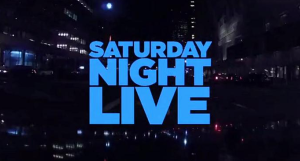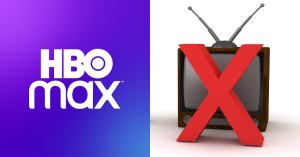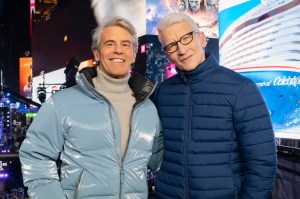Britt Stewart is shining on Dancing With the Stars. Stewart made history as the first Black female Pro on the show. This year, she competed with partner and Cobra Kai/Karate Kid star Martin Kove as they set their sights on the Season 30 Mirrorball. While the pair’s time on the show is done, Stewart’s journey is far from over.
Stewart is a vet in the dance world. Prior to DWTS, Stewart performed alongside some of the biggest stars, including Rihanna, Demi Lovato, Nick Jonas, Florence + The Machine, Selena Gomez and Janet Jackson. Her most notable tenure was as one of Katy Perry’s core dancers for three years where she performed with her on her Prismatic World Tour.
Videos by PopCulture.com
Now, Stewart is using her platform to help other dancers. Her nonprofit organization Share The Movement brings ballroom dancing to underprivileged/BIPOC communities. PopCulture.com spoke with Stewart about her dance life before DWTS, what being the first Black pro on the show means to her, how health is wealth as a dancer, and the joys helping other dancers bring her.
PC: Before we get into your monumental participation in Dancing With the Stars, I just want to go back a little bit to speak about your prolific dance career. You’ve performed alongside some major heavy hitters throughout your career. Who has been your favorite and why?
Britt Stewart: Katy Perry is one of the most memorable artists just because she is amazing. But I also spent the longest amount of time with her. I was a backup dancer for her for three years, for her entire Prismatic album. We did like the promo tour and we did the world tour. I got to do Super Bowl with her when she performed at the Super Bowl halftime show. I would say the other one is Janet Jackson. There are really no words to describe Janet.
How did your participation in DWTS come about? Obviously, they’re like fanatics of the show. But there are also some people who only watch specific seasons contingent upon which stars are participating. So how did you end up on the show?
Dancing With the Stars has always had background dancers. Way back in the day, they used to have something called Macy’s Stars of Dance. And so I would pop in just as a commercial dancer and an extra gig from season to season. One of my first times on the show was probably over 10 years ago. I performed with Annie Lennox. Once the choreographer Mandy Moore got involved with the show – I’m from Colorado and she’s from Colorado. We’ve known each other for a really long time, and I worked with her a lot. She would hire me as a dancer on different gigs. And so once she got involved, she opened the doors for me to be seen by the producers. And that’s how I got my audition. She recommended me for it. She was able to get me in a certain place where they were able to see me dance, and I did my audition and I didn’t think I was going to get it. But then six months later, they called me and asked me to be on. It happened so fast. I was literally signing my contract all the way to the first rehearsal.
You made history as the first Black full-time pro competitor on the show. What does that mean to you as far as not just people in the dance world, but also little girls or little boys who are watching the show and they’re able to put a face to a dream that they may not have even dreamed before? Prior to you, we didn’t really have that representation on the show.
It means everything to me. I really don’t take it lightly. I understand the weight that it carries and the responsibility that that carries as well. As soon as I got the role of being a pro, I knew that that was going to come with it. And so I think it’s so important. Dance as a community, as a culture is very diverse, especially in Black and Brown cultures. Dance runs through our veins. It’s prevalent. But where diversity lacks is in certain positions in the dance community, like a proposition on DWTS or like a top producer or whatever it is. And so even in the ballroom community as well, ballroom dance as a whole is not diverse. And so even showing that to a little Black girl who’s at home watching TV that it is possible to be on a show means everything. And it is really not only does it mean so much to me for DWTS, but it’s also seeped into just how I’m living my life and what I’m choosing to do with my personal mission. I along with an amazing group of people started a nonprofit organization called Shared Movement, and our whole mission is to increase diversity in the professional dance community and through representation and through exclusivity and inclusivity, and opportunity. We want to be able to support young BIPOC kids so that we can make their dreams come true.
I love the fact that you mentioned your nonprofit organization. Anyone who knows anything about dance or is a fan of dance, specifically classical genres, we know that there’s a lack of representation on the stage and you who’s chosen to be lead performers. The African-American female body type is not always necessarily the ideal standard for genres such as classical ballet. For many, it wasn’t until we saw Misty Copeland make it to the heights that she has, that we’re like, ‘OK, well, maybe this is possible for the next generation,’ but it’s something that you mentioned specifically is ballroom dance. And I think that the difference between ballroom dance and other genres is that it’s an expensive undertaking. It can be upwards of thousands of dollars a month. What has the response been from students who you have been able to for a way into your program? How have they been receptive to it?
It’s been amazing. We’re so surprised on everything that has unfolded since we launched because we only launched in April. And by the way, our organization is very 2020. We have never had an in-person board meeting. Everything has happened over Zoom, which is insane. We were able to fund 17 kids for their preferred dance summer dance programs. And then on top of that, we were able to offer the kids that we weren’t able to scholarship free summer dance classes with a program called Seelye, which is an online platform dance program. Any kid that applied for our scholarship, they were able to receive something to extend their dance training this summer. It’s been rewarding and emotional. There was one child from the Philippines that we were able to fund her summer dance program, and she had completely lost hope of dance and continuing to dance. And she just got emotional and started crying. And then, of course, we all got emotional and then we all were like, ‘This is why we are doing what we’re doing.’
Another thing that I really wanted to touch on is the fact that the world of dance has changed so much. I remember when I was growing up, being a background dancer for a major artist and touring was in. Of course, there was Broadway and major companies like Alvin Ailey. But there’s been a transition. Music videos aren’t as popular, Broadway stopped for a year and a half courtesy of the coronavirus pandemic. But then there’s also been some new movement with online classes and the digital world and people creating opportunities on YouTube. So what is it that you miss about the way things were? And what do you appreciate about where we are now?
I’ll say this what I miss about how things were. I was the girl that wanted to be on TV. Me and my best friend growing up through middle school through high school, we always knew I was going to move to L.A. and be on TV and do the film and backup dancing. And then she was going to move to New York and do Alvin Ailey. All these years later, we are both living the dreams we wished when we were younger. But I remember being that little girl and saying, ‘That is what I want to do.’ Now, you don’t think you get to see that so much. I see the next generation of dancers really not knowing what path to take because everything is so accessible and there’s not a direct route to how to become a professional dancer. I think these days, a lot of people consider themselves professional dancers because they’ve gotten social media famous or whatever it is or that instant gratification. And so I think that has an effect, and I think I miss that. But what’s so amazing about the digital world is that you’re not necessarily confined to just one path. So even though I’m saying it’s kind of making things confusing, it’s also amazing because it makes being a dancer really accessible. It makes being successful really accessible, and it just makes your dreams and everything that you want to do feel more limitless, I would say.
And the final thing that I want to touch on is you really advocating for not just health overall, but specifically, dance health. And for dancers specifically, your body is your instrument. It’s your main tool. It’s what you use to do your job. And you’ve been open about some of the health issues that you’ve come across and have had to make certain lifestyle changes.
Yeah, you’re right. Not only is health and dance health, specifically, body health, really important to me, but I also kind of geek out on it because I just find it so interesting. And so I would say the biggest things for me are starting with self-love. I think as a teenager and coming into my own, I think I made some choices when I was much younger, all out of insecurity and not liking my body and not liking the way that God made me. And I think those along with those things, some genetics and autoimmune, had an effect on my health. And I had to really shift my perspective and thank goodness my mom and my dad had already really introduced me into the world of homeopathic medicine. I was able to go down the natural route and do lifestyle changes like my diet, mostly. It was mostly my diet. And even spiritually too. I believe it’s all a balance. Being in tune with your body, listening to what your body needs, but then also making sure that you’re mentally healthy as well. Meditating, training, I go to therapy. It’s like an all-inclusive, whole-body health experience that I’m really passionate about.
Check out the full video interview with Stewart above, where she also elaborates on how dancers should maintain healthy eating and mental health habits. Visit her YouTube channel to see more of her choreography.








